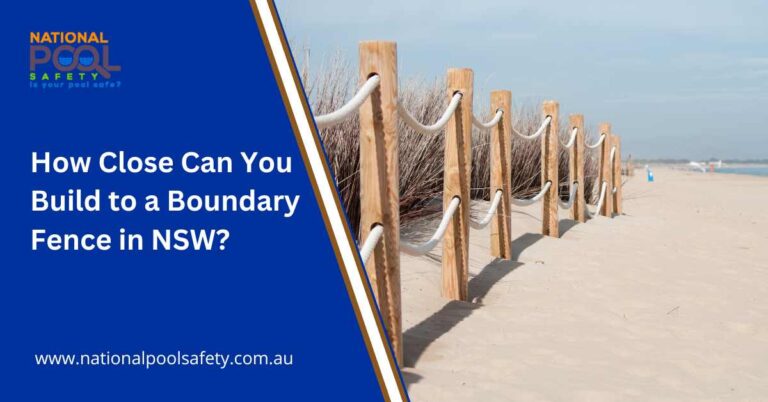How Close Can You Build to a Boundary Fence in NSW?

Introduction
When planning any construction on your property in New South Wales (NSW), it’s essential to understand the rules and regulations about how close you can build to a boundary fence. These laws help maintain privacy, safety, and harmony between neighbors. Failing to comply with these regulations can result in costly legal disputes and even forced demolition. In this article, we will explore the rules governing boundary setbacks in NSW, when you need council approval, and common questions homeowners have when planning construction near a boundary fence.
Building Regulations in NSW
NSW has specific regulations regarding how close you can build to a boundary fence, which vary depending on the type of property and its location. These regulations are enforced by local councils and are meant to ensure that constructions do not adversely affect neighboring properties. For instance, privacy concerns, access to sunlight, and noise control are common factors that influence these laws.
Different councils may have slightly different rules depending on the zoning of your property (residential, rural, commercial, etc.), so it’s crucial to check with your local council before starting any construction.
Understanding Boundary Setbacks
Boundary setbacks refer to the minimum distance that a building or structure must be from the property boundary. These distances can vary based on the type of structure, the height of the building, and the land’s zoning. For example:
- Residential properties often have setbacks between 900mm and 1.5 meters from the boundary for single-story dwellings.
- Multi-story buildings might require larger setbacks to protect the privacy of neighboring properties.
Factors such as location (urban vs. rural) and the specific layout of the land (e.g., corner lots, sloping land) can also influence how close you can build to the boundary. Local council regulations are the ultimate authority, and you should always consult with them before starting your project.
In NSW, you often need council approval if you’re building near the boundary fence, especially if you’re planning major work like a home extension, garage, or new dwelling. This involves submitting a development application (DA) that details your construction plans, including a site survey that identifies the exact location of property boundaries.
The council will assess factors such as the height and scale of the structure, its impact on neighbors, and whether it complies with local planning controls. Depending on your project, you might also need to apply for a construction certificate, which confirms that your plans comply with building codes.
Council Approvals and Permits
In NSW, you often need council approval if you’re building near the boundary fence, especially if you’re planning major work like a home extension, garage, or new dwelling. This involves submitting a development application (DA) that details your construction plans, including a site survey that identifies the exact location of property boundaries.
The council will assess factors such as the height and scale of the structure, its impact on neighbors, and whether it complies with local planning controls. Depending on your project, you might also need to apply for a construction certificate, which confirms that your plans comply with building codes.
Impact on Neighboring Properties
Building too close to a boundary fence can have several impacts on your neighbors, including:
- Privacy: If your building overlooks their backyard or living areas, this could lead to disputes.
- Noise: Structures like garages or home extensions near the boundary may increase noise levels for your neighbor.
- Access: If you build too close, it may limit access to both properties for maintenance or repairs.
It’s often a good idea to discuss your building plans with your neighbors beforehand to avoid potential conflicts. Open communication can help address any concerns they may have and ensure a smoother process.
Common Building Scenarios Near Boundary Fences
There are several common scenarios where homeowners may want to build close to a boundary fence. These include:
- Home Extensions: Adding extra rooms or extending living space often requires council approval, especially if the extension is near the boundary.
- Sheds and Garages: Smaller structures like sheds or garages may be allowed closer to the boundary, but they still need to comply with setback rules. The distance often depends on the height and size of the structure.
Landscaping or Fencing: While landscaping projects and fencing can usually be done without council approval, the height of fences is often regulated, especially if they block a neighbor’s view or light.
Frequently Asked Questions (FAQs)
How close can you build to a boundary in NSW?
In NSW, the minimum distance you can build from the boundary varies depending on your local council’s regulations and the zoning of your property. For example, for a standard residential block, you may be required to leave at least 900mm to 1.5 meters of space between the building and the boundary. Always check with your council to confirm the specific setback rules for your area.
You cannot simply build right up to your neighbor’s fence without checking the relevant laws. Generally, for minor structures like sheds or garages, you may need to leave at least 900mm to 1 meter of space. This allows for access and maintenance. Some councils may permit building closer if specific conditions are met, but you’ll often need council approval to do so.
Similar to the previous question, you must follow the setback rules established by your local council. Building too close to a neighbor’s fence without approval can lead to disputes, especially if it affects their privacy or access. If your plans don’t meet the required setbacks, you may need to adjust your design or seek a council exemption.
How close to my neighbor’s fence can I build?
You cannot simply build right up to your neighbor’s fence without checking the relevant laws. Generally, for minor structures like sheds or garages, you may need to leave at least 900mm to 1 meter of space. This allows for access and maintenance. Some councils may permit building closer if specific conditions are met, but you’ll often need council approval to do so.
How close to a neighbor’s fence can I build?
Similar to the previous question, you must follow the setback rules established by your local council. Building too close to a neighbor’s fence without approval can lead to disputes, especially if it affects their privacy or access. If your plans don’t meet the required setbacks, you may need to adjust your design or seek a council exemption.
Boundary Disputes and Conflict Resolution
Building near a boundary fence can sometimes result in disputes with neighbors, especially if they feel the construction impacts their privacy or enjoyment of their property. To resolve disputes, the best first step is open communication. However, if that fails, you can seek mediation services offered by your local council. If mediation doesn’t work, legal action may be required. The NSW Civil and Administrative Tribunal (NCAT) can hear cases regarding boundary disputes.
Conclusion
Building near a boundary fence in NSW requires careful consideration of local regulations, neighbor relationships, and the potential impact on nearby properties. Always consult your local council to ensure you comply with setback rules and obtain necessary approvals. By following these guidelines, you can avoid costly disputes and ensure that your construction project proceeds smoothly, keeping both your property and your neighbors’ rights in mind.




